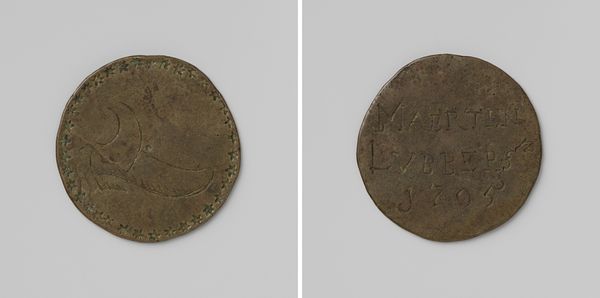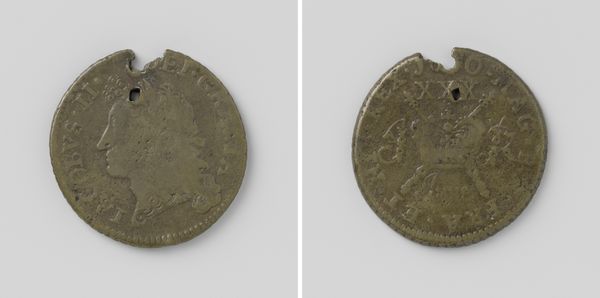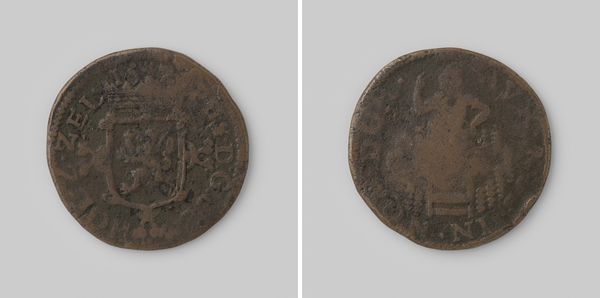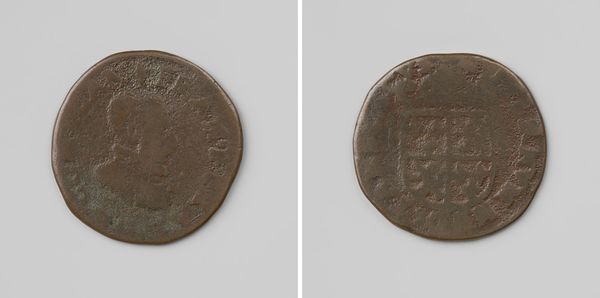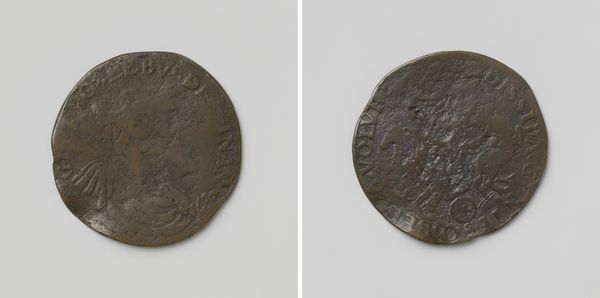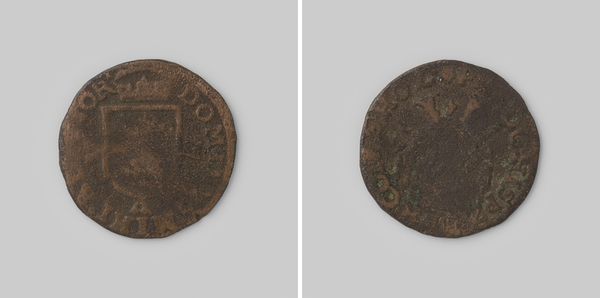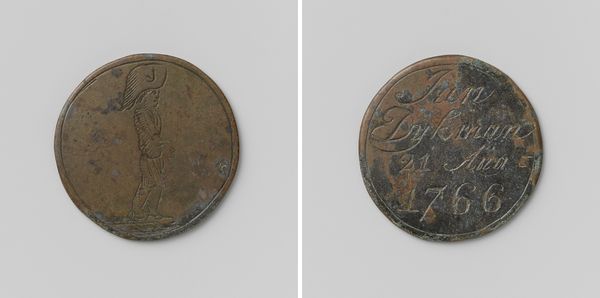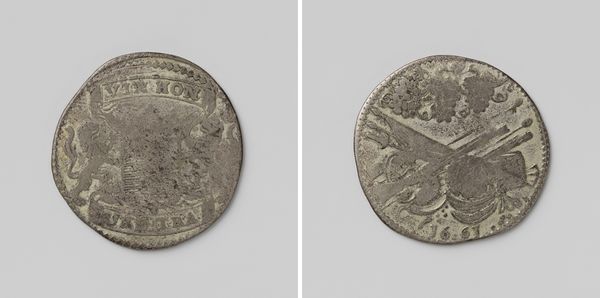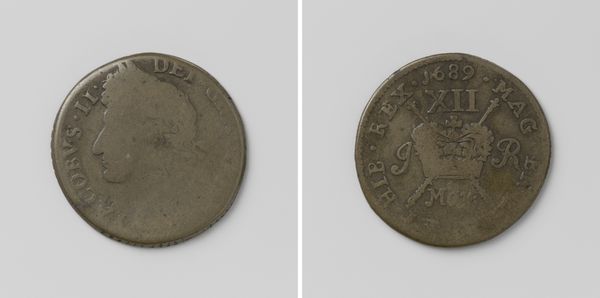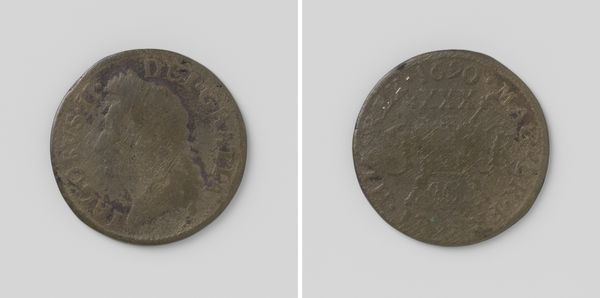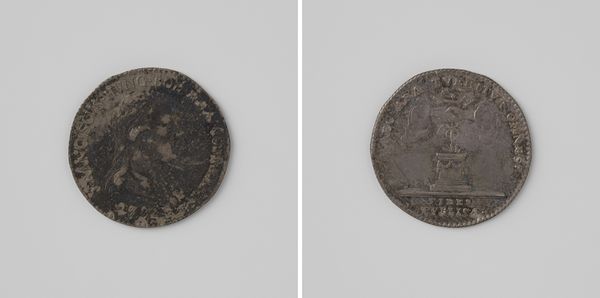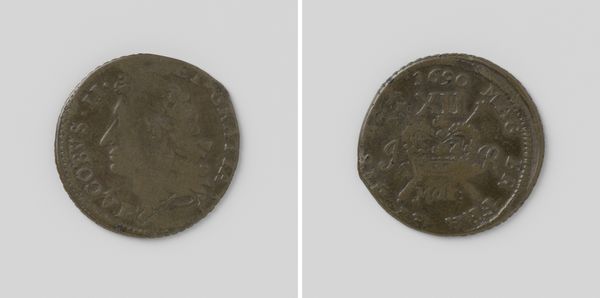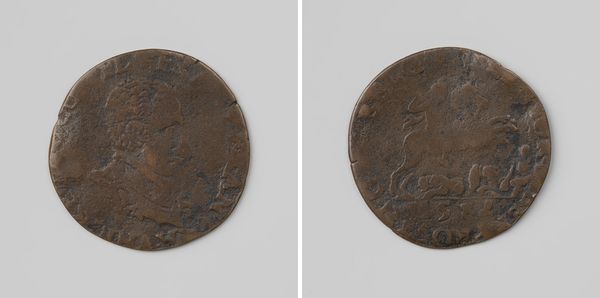
Inhuldiging van Francois-Hercule, hertog van Anjou, als graaf van Vlaanderen te Gent 1582
0:00
0:00
anonymous
Rijksmuseum
metal, bronze
#
portrait
#
metal
#
bronze
#
ancient-mediterranean
#
miniature
Dimensions: diameter 2.5 cm, weight 5.35 gr
Copyright: Rijks Museum: Open Domain
Editor: So, we have here a bronze medal titled "Inauguration of Francois-Hercule, Duke of Anjou, as Count of Flanders in Ghent", created anonymously in 1582. Looking at this little piece, what strikes me most is its everyday quality – it’s not pristine or imposing, but worn and simple. What's your take on this object? Curator: Its materiality speaks volumes. Bronze, a relatively accessible metal, positions this object within a specific economic and social sphere. Rather than focusing on some idealized representation of power, this small, functional object provides a unique entry point to understanding the mechanisms of power at work. Who was producing these? Were they distributed widely, or only to a select group? These factors illuminate how Anjou sought to cultivate his image. Editor: That’s interesting. I hadn't considered the production aspect so directly. Do you think its imperfections affect its value as a historical document? Curator: Not at all. Its very existence and material condition – the wear and tear, even the slight imperfections – tell a story about circulation, usage, and ultimately, about the relationship between the ruler and the ruled. How does accessing this information via reproduction impact your interpretation? Editor: Hmm. Seeing it as a digital image removes some of that sense of age and physical interaction, I suppose. It becomes an image representing a thing, not necessarily the thing itself. I guess it is less evocative of its origins and history of labor now. Curator: Precisely. Thinking about the journey from the artist’s hands, through circulation, to its place in a museum, and finally, to its digital reproduction, allows us to trace its evolving cultural and economic value. Editor: That really shifts my understanding! Now I see how even this little coin can reflect complex social relationships and shed light on material production practices. Thanks! Curator: My pleasure. These everyday objects often tell the most grounded and truthful narratives, connecting us to tangible historical realities through their humble existence.
Comments
No comments
Be the first to comment and join the conversation on the ultimate creative platform.
